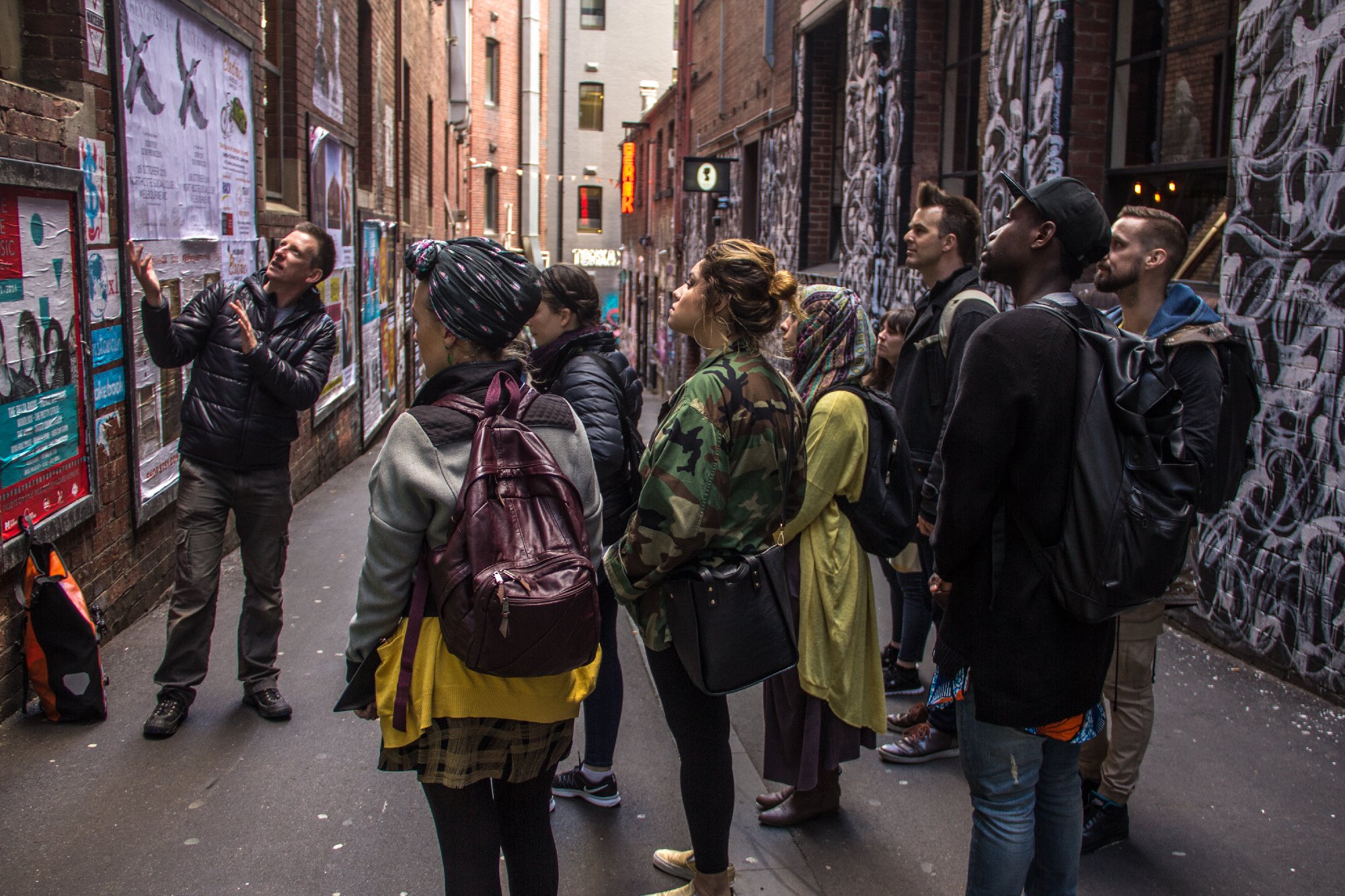Melbourne Laneways
Street Art Study and Visual Documentation
2016
In the heart of Melbourne, graffiti isn’t just a splatter of paint—it’s the lifeblood of a vibrant subculture, a visual conversation that has echoed through the laneways for decades. “Graffiti Down Underground” by Lachlan MacDowall illuminates this dialogue, drawing attention to the “layers upon layers of paint on walls that become sites of memory, battlegrounds of visual territory, and canvases for unsanctioned creativity.” This sentiment resonated with each step we took through the city’s iconic street art corridors, tracing the cultural significance of a movement that has transformed the urban landscape into an open-air gallery of transient creativity.
The laneways of Melbourne, steeped in artistic rebellion, reflect an ever-evolving narrative. Here, art is not confined to the static permanence of a frame but thrives on the ephemeral nature of the street. As MacDowall notes, “Graffiti is both an act of claiming space and a gesture towards the fleeting moment of its creation.” Our journey through these storied streets was a testament to that dual nature, where the fleeting life of a piece magnifies its impact, a transient treasure map of culture and counterculture intertwined.
Each wall we encountered was a palimpsest, its layers a chronicle of the city’s pulse, with new stories painted over the old, each artist leaving behind a piece of themselves. “The graffiti speaks not just to the city’s residents but to other graffiti writers, forming a visual call and response that stretches across time and geography,” MacDowall writes. This conversation was palpable in the air, as tangible as the spray paint’s scent, as we listened to the walls whispering the history of Melbourne’s artful insurgency.
Over the course of a day, we traversed the dynamic tapestry that is Melbourne’s graffiti culture, inspired by MacDowall’s profound insights. With each quote, each storied laneway, and each mural that caught our gaze, we were reminded of the power of art to challenge, communicate, and transform. The walk became more than an educational tour; it was a journey into the heart of a city that wears its artistic soul on its sleeve, inviting each passerby to pause, reflect, and perhaps to answer back with colors of their own.

